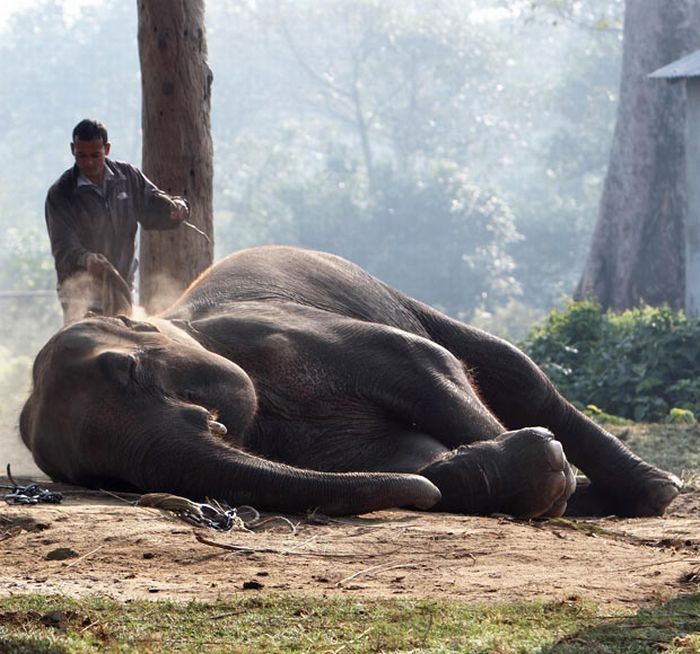Elephant Beauty Pageant, Chitwan District, Nepal
|
Under the new two species classification, Loxodonta africana refers specifically to the savanna elephant, the largest of all elephants. It is the largest land animal, with males standing 3.2 metres (10 ft) to 4 metres (13 ft) at the shoulder and weighing 3,500 kilograms (7,700 lb) up to a reported 12,000 kilograms (26,000 lb). The female is smaller, standing about 3 metres (9.8 ft) at the shoulder. Most often, savanna elephants are found in open grasslands, marshes, and lakeshores. They range over much of the savanna zone south of the Sahara.
The other putative species, the forest elephant (Loxodonta cyclotis), is usually smaller and rounder, and its tusks thinner and straighter compared with the savanna elephant. The forest elephant can weigh up to 4,500 kilograms (9,900 lb) and stand about 3 metres (10 ft) tall. Much less is known about these animals than their savanna cousins, because environmental and political obstacles make them difficult to study. Normally, they inhabit the dense African rain forests of central and western Africa, although occasionally they roam the edges of forests, thus overlapping the savanna elephant home ranges and hybridizing. In 1979, Iain Douglas-Hamilton estimated the continental population of African elephants at around 1.3 million animals. This estimate is controversial and is believed to be a gross overestimate,, but it is very widely cited and has become a de facto baseline that continues to be incorrectly used to quantify downward population trends in the species. Through the 1980s, Loxodonta received worldwide attention due to the dwindling numbers of major populations in East Africa, largely as a result of poaching. According to IUCN’s African Elephant Status Report 2007, there are between 470,000 and 690,000 African elephants in the wild. Although this estimate only covers about half of the total elephant range, experts do not believe the true figure to be much higher, as it is unlikely that large populations remain to be discovered. By far, the largest populations are now found in southern and eastern Africa, which together account for the majority of the continental population. According to a recent analysis by IUCN experts, most major populations in eastern and southern Africa are stable or have been steadily increasing since the mid-1990s, at an average rate of 4.5% per year.
Elephant populations in West Africa, on the other hand, are generally small and fragmented, and only account for a small proportion of the continental total. Much uncertainty remains as to the size of the elephant population in central Africa, where the prevalence of forest makes population surveys difficult, but poaching for ivory and bushmeat is believed to be intense through much of the region. South African elephant population more than doubled, rising from 8,000 to over 20,000, in the thirteen years after a 1995 ban on the trade in elephant ivory. The ban on the ivory trade in southern Africa (just there) was lifted in February 2008, sparking controversy among environmental groups.
|
|









